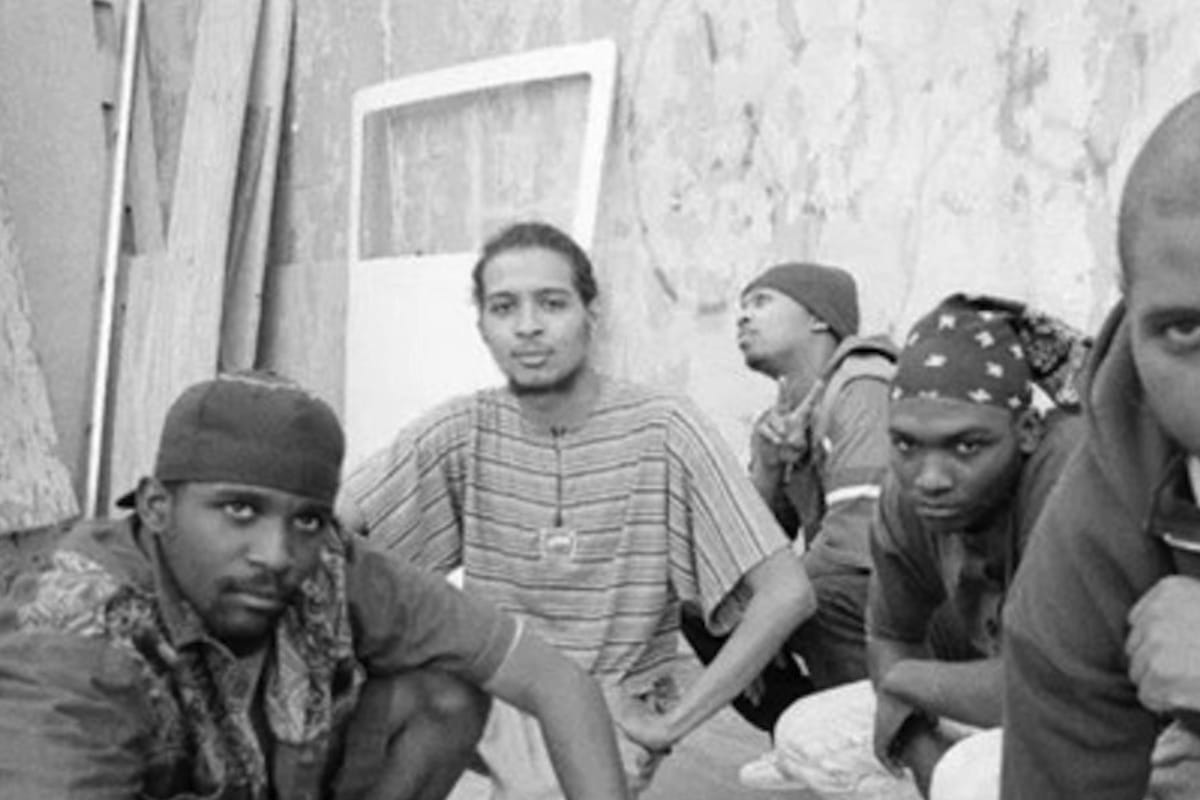In the landscape of hip-hop, few groups have carved such a unique and indelible path as Freestyle Fellowship. Hailing from Los Angeles, California, the group, comprised of Aceyalone, Myka 9, P.E.A.C.E., and Self Jupiter, emerged as a vital force in the early ’90s. Their story is not just one of music, but of cultural and stylistic innovation, pushing the boundaries of what hip-hop could be.
The seeds of Freestyle Fellowship were sown in the late 1980s when Aceyalone, Myka 9, and Self Jupiter, still in high school, formed the MC Aces. It was in the crucible of the Good Life Cafe in Los Angeles—a hub for emerging hip-hop talent—that their skills were honed. P.E.A.C.E., a former high school friend, joined the crew, and together they evolved into Freestyle Fellowship. This group wasn’t just another hip-hop act; they were part of a movement, rubbing shoulders with the Good Life Cafe collective and later, the influential Project Blowed collective.
1991 marked a significant milestone with the release of their debut album “To Whom It May Concern…”. Limited in its initial run, it nonetheless sowed the seeds of a loyal following. Their follow-up, “Innercity Griots” in 1993, further cemented their reputation. Freestyle Fellowship wasn’t just rapping; they were reinventing the genre. Their style was a complex tapestry of jazz-infused beats and intricate, explosive rhymes, reminiscent of a jazz solo in its improvisational brilliance.
But it wasn’t all smooth sailing. The group hit a snag with Self Jupiter’s incarceration, leading to a hiatus. It wasn’t until 1998 that they briefly reunited, a prelude to their later works including the “Shockadoom” EP and albums “Temptations” and “The Promise”.
What set Freestyle Fellowship apart was their fearless approach to music. They weren’t just rappers; they were musical liberators. Myka 9 once described their mission as freeing rap from its traditional structures. Their music was a rebellion against the mainstream, an alternative to the gangsta rap that dominated the West Coast scene. Their lyrics were not just words; they were a canvas for painting vivid, abstract images, touching on themes from the mundane to the metaphysical.
Their track “My Fantasy” is a testament to this style. Aceyalone’s delivery is a whirlwind of rapid, twisting rhymes, a stream-of-consciousness that pulls you into a different realm. The LA Times aptly noted their jazz influences, while LA Weekly hailed them as the “astral jazz-cracked geniuses” of South Central.
Throughout the 2000s, while the members pursued solo projects, the spirit of Freestyle Fellowship endured. The release of “The Promise” in 2011 under the Freestyle Fellowship banner was a reminder of their enduring influence and creativity. Their contribution to hip-hop goes beyond their discography. They inspired a new wave of artists who saw in them the possibility of blending genres, of storytelling in new, uncharted ways.
Freestyle Fellowship’s journey through the rap landscape is a tale of innovation, resilience, and artistic integrity. They didn’t just make music; they created a legacy that continues to inspire and challenge artists and fans alike. In a world where hip-hop is often boxed into stereotypes and commercial pressures, Freestyle Fellowship stands as a beacon of creativity and defiance, a reminder that the heart of music lies in its ability to evolve and break barriers.
Would you like to learn more? Dive deeper into the depths of Freestyle Fellowship in our featured articles below.






